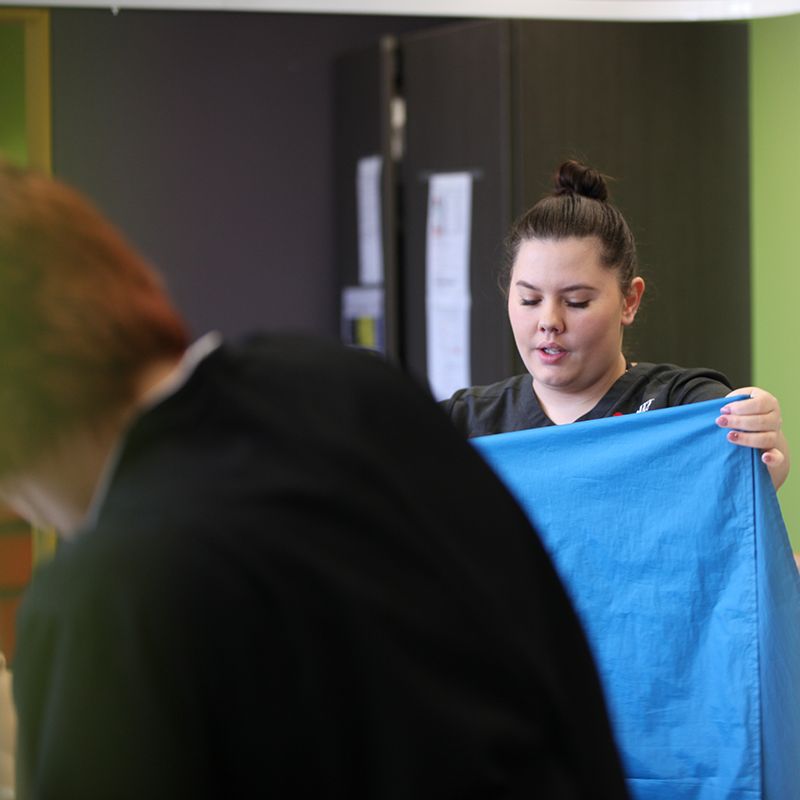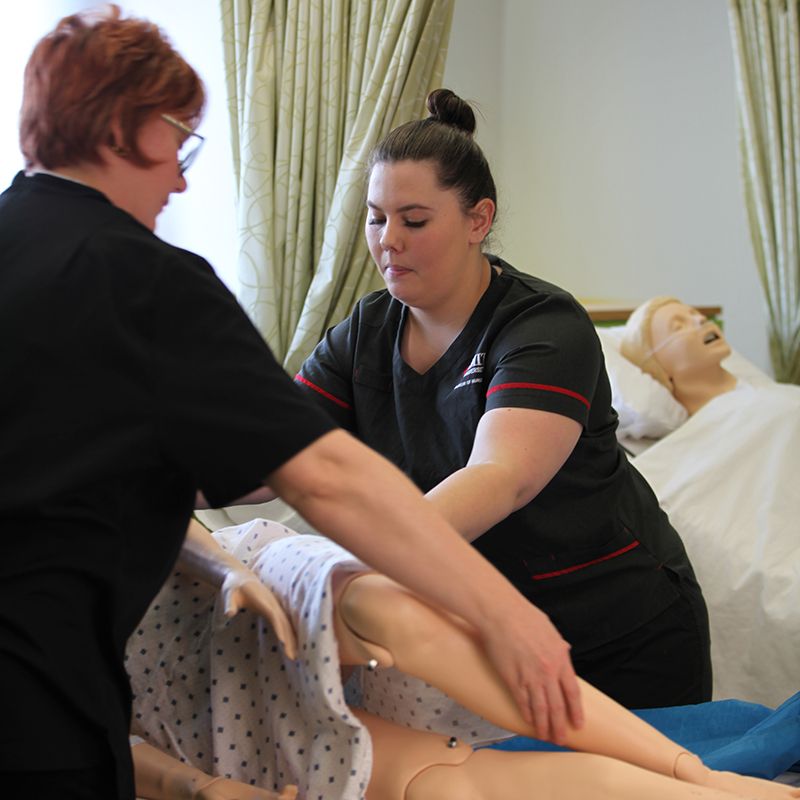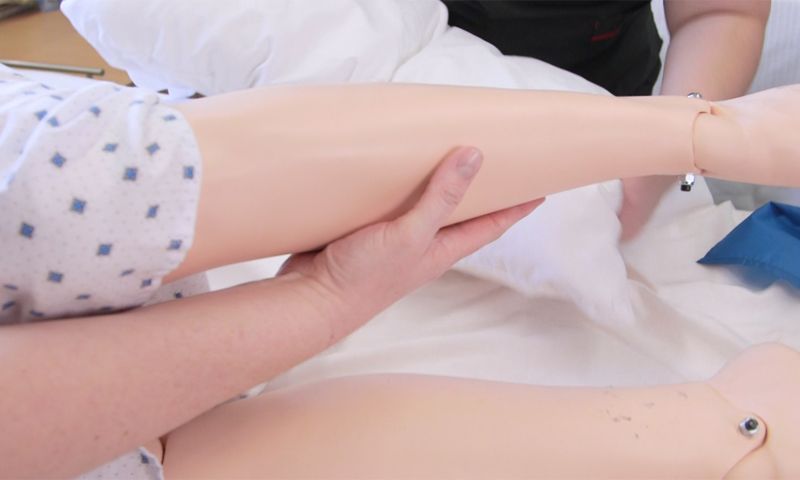Some people can’t get out of bed. If they lie too long in one position, they can develop pressure injuries from where pressure builds up, restricting blood flow, causing injury to the skin. This commonly occurs on in the sacrum, back of the heels or elbows.

Pressure Injury Care - Get the RMIT Know-How
Pressure injuries are a real issue for the health of older people, like residents in aged care homes. Lying too long in one position can restrict blood flow and cause injuries to the skin and infections.
For older patients (like residents in aged care homes) this can cause real issues regarding their health, and can lead to infections. Even a small fold in the sheet can cause real discomfort.
Many of these patients have conditions where mobility is limited, and it was through studying a Certificate III in Individual Support (Ageing and Disability) that I learned how to help them feel more comfortable.
If you have a loved one that has these issues, it’s really simple and safe to learn how to move patients and ensure they don’t develop pressure injuries.Here’s how it works.
It's as easy as 1,2,3...
We use a slide sheet. This is a sanitised sheet made from polyester and coated with silicon. It makes it easy for the patient to move, and makes it easier for us to move them.
It’s best to have a second person helping with this. It makes it easier for the carer, and makes the patient feel more secure about being moved.
Lift the patient’s knee closest to you and bend it, place their arm on the same side over their chest then roll them onto their side. This helps us get the slide sheet under them.
Fold the slide sheet in half lengthwise, and make sure the opening of the sheet is on the opposite side in which direction you want the patient to turn. This will help with the rolling. Lay them on their back and repeat the knee lift and roll on the other side, to ensure the slide sheet is flat and completely under the patient.


Once we have the slide sheet under them, making sure the patient is flat, in one swift push/pull motion, we turn the patient.
If they need, we can put a pillow behind their back for extra support. It’s also good to have something between their knees and their ankles to reduce any extra pressure build up that may occur.

Now the slide sheet can be removed from under the patient. This is done by pulling down, to prevent any injury to the skin. You can now cover the patient back up and ensure they are comfortable.
That’s how we move patients using a slide sheet!
The care doesn't stop there
If you do find a pressure injury, or potential injury, you need to address it to prevent further injury. Depending on how big it is, you would cover it and perform more frequent rotations. Rotation should be done at a minimum of 2 hourly. If needed, you can also get advice from the doctor.
Treating and caring for people with pressure injuries is just one of the skills I learned in my Certificate qualification. It’s nursing know-how I got from RMIT, so that I can care for my career.


